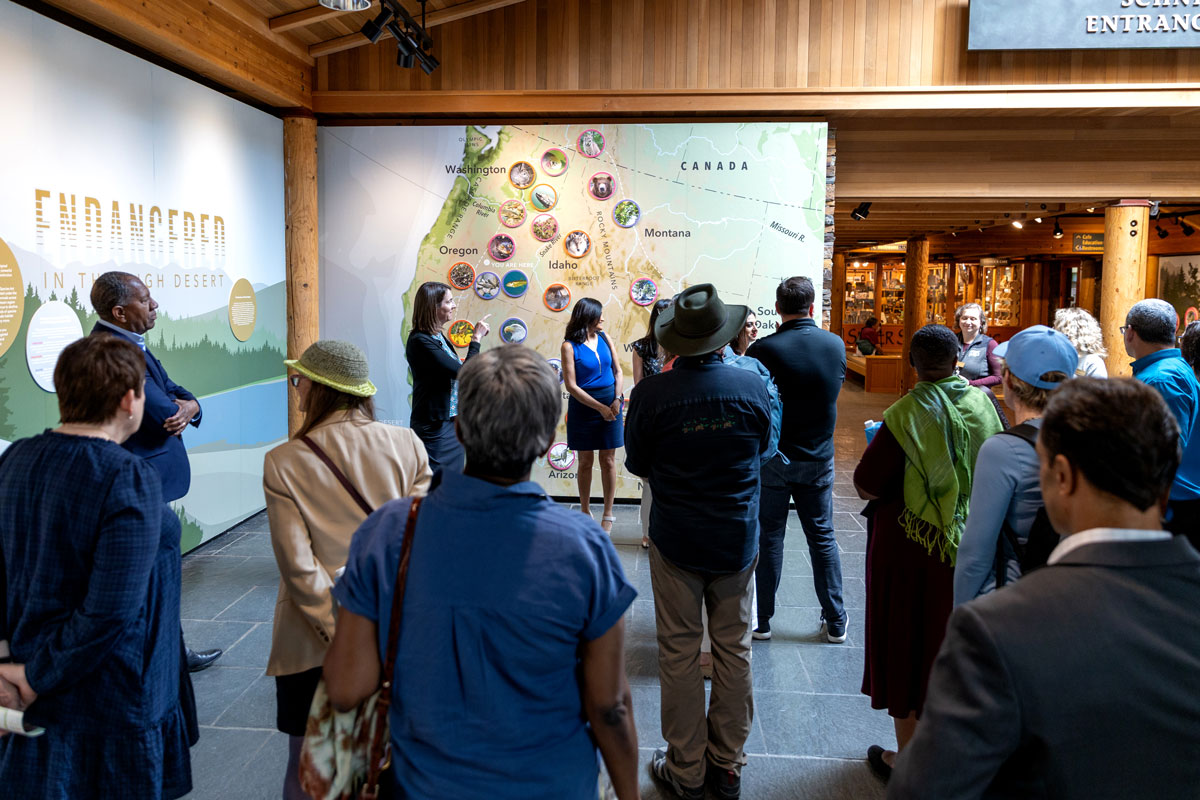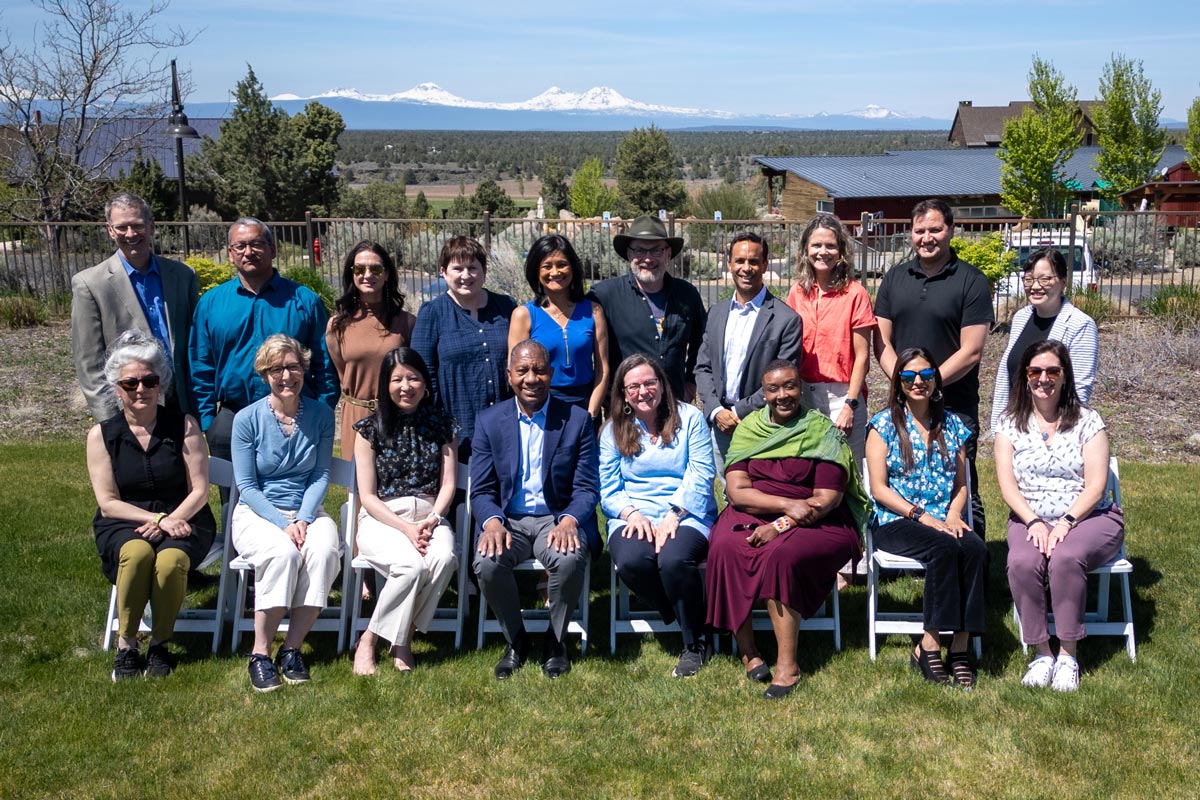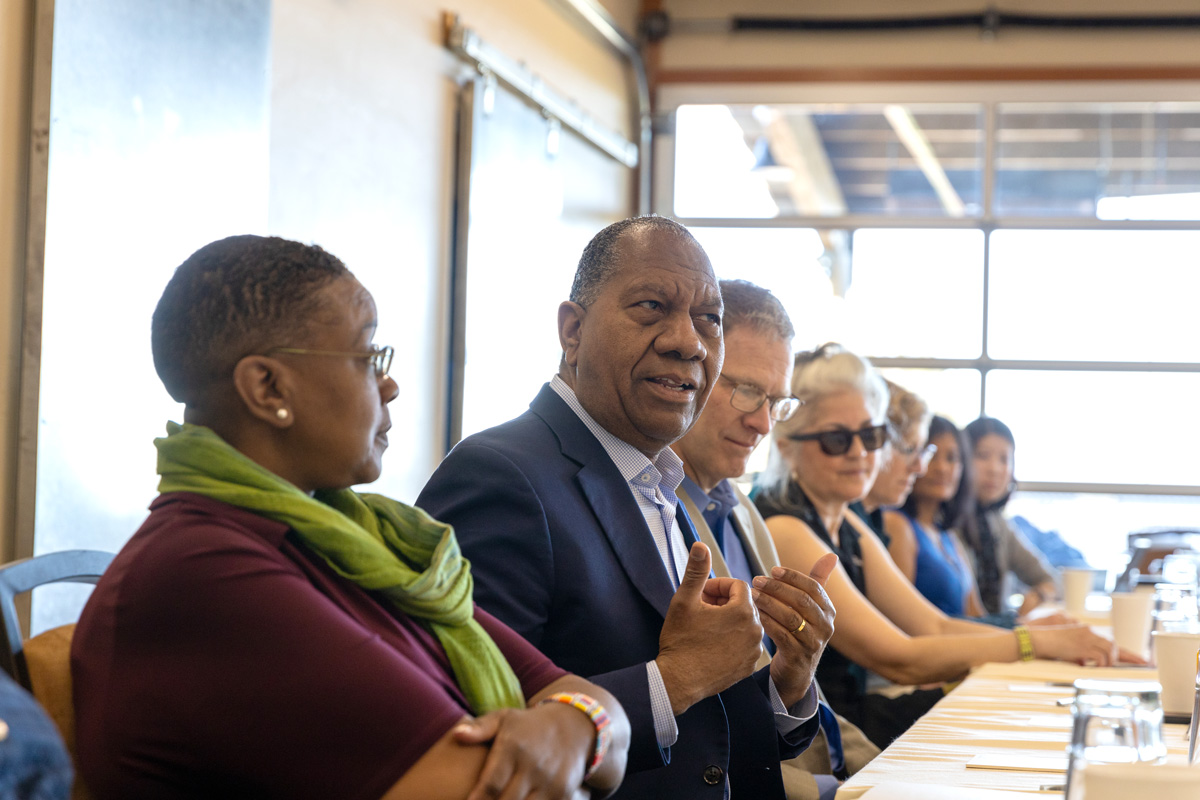Ann Naithani, our director of organizational effectiveness and talent development, talks about philanthropy’s strengths to advance DEI.
When I was considering joining the staff of the Northwest Area Foundation in the summer of 2017, I was largely unfamiliar with foundations or philanthropy. My previous experience in human resources was in higher education and health nonprofits. The more I learned about the Foundation’s mission, the more I wanted to be a part of the organization. This turned out to be a great career move for me, as our work and the people it impacts continually inspire, humble, and motivate me.
Real and lasting change.
On one of my first days at NWAF, I attended the annual human resources summit hosted by the Council on Foundations. I had a chance to listen to Steve Pemberton, author of the 2012 memoir A Chance in the World and then-divisional vice president and chief diversity officer for Walgreens. He argued that with all the chaos and complexities of our current social and political moment, philanthropy has the resources, power, and connections to take stands and make real and lasting change.
His words resonated with me that day, and I’ve often reflected back on them. I keep thinking about the day-to-day challenges—poverty, bias, and injustice—that people are still facing. In the United States. In 2018. These issues are at the heart of NWAF’s mission to expand economic opportunity in under-resourced communities, and we’re funding great work. Still, a question keeps gnawing at me: How can we push our mission further?

Change from the inside out.
As NWAF’s director of organizational effectiveness and talent development (yes, that’s a mouthful), I spend my time leading our human resources functions, including strategy, employee relations, individual development, and organizational change. My responsibilities connect directly to NWAF’s journey toward DEI. My work is challenging from an HR perspective because NWAF is a mission-driven organization that responds to dynamic issues. There isn’t always an established road map to follow in terms of the issues or challenges that arise.
“Here at NWAF, we articulate our deepest aspirations for addressing injustices, which is great. We should keep doing that. We must also find concrete ways to act on them.”
The mechanics of change.
Here at NWAF, we articulate our deepest aspirations for addressing injustices, which is great. We should keep doing that. We must also find concrete ways to act on them.
For example, our equity statement calls for “just and fair inclusion into a society in which all can participate, prosper, and thrive on their own terms.” Yes. Now how do we bring that to life?
How might our employee recruitment and hiring support that goal in practical terms? Perhaps it means stating our equity goal in job descriptions and focusing on candidates from our priority communities (Native Americans, communities of color, immigrants, refugees, and people in rural areas). It probably also means a number of other choices and actions we still need to identify.

NWAF’s staff members come to the Foundation with our heads and hearts—our intellect and passion—invested in the work. We come with various types of training and education, and we’re working to put the Foundation’s mission into action as best we can.
Another way into the work is lived experience—knowing what it feels like to live firsthand the cultural and economic disparities that NWAF exists to address. Some of our staff have lived experience from our priority communities; they bring this experience to NWAF. Their unique perspective informs and enhances their work as they know what it feels like to be a part of the community. As we hire more staff who represent our priority communities, we must better understand how to support and validate this lived experience.
Change is personal.
Growing up in the Twin Cities in the 1970s and 1980s as the daughter of Indian immigrants, I was often the only person of color in the room. I think of having lived my childhood in two cultures. At home, we absorbed and followed the cultural values my parents brought from India. Away from home, I was expected to mesh with the Midwestern American values that surrounded me—but only so much.
My own lived experience fuels my efforts to find ways to address the disproportionately low numbers of women and people of color in leadership positions. I keep exploring how I can use the influence of my position to find constructive and useful ways to diminish these inequities.
“Our organizational mission is to help alleviate poverty and focus on our priority communities. If we’re better informed around DEI issues, we’ll be better equipped to carry out our work.”
Change is urgent.
Our DEI efforts are timely and pressing. The troubling events and attitudes of today—no matter your political stance—should make us all take a sharp look at who has the power to influence change that will make a real difference. Many of the inequalities around the subject of race are hitting us as a society on a daily basis.
Take, for example, the recent shooting of Botham Shem Jean of St. Lucia in his own apartment in Texas, ongoing evidence on how African American children are falling behind in schools, and the continued misinformation and misunderstanding about Native American communities. Our organizational mission is to help alleviate poverty and focus on our priority communities. If we’re better informed around DEI issues, we’ll be better equipped to carry out our work.

Inertia is the enemy of change.
So—what gets in the way of change? Holding tight to ingrained patterns. You know the tired refrain: “That’s not the way we do it.” Making new choices is predicated on finding ways around the hindrance of inertia. How do we get ourselves to think differently? Are we willing to be agile in adapting to new ways to advance our mission?
“Are we willing to be agile in adapting to new ways to advance our mission?”
Let’s make change together.

Let’s keep putting our hearts, minds, and energy into this DEI journey. Let’s be brave enough to ask the hard questions. Let’s take this opportunity to model how philanthropies can leverage our particular strengths to make and sustain progress toward lasting diversity, equity, and inclusion.
Author

Alli Naithani
Director of Organizational Effectiveness and Talent Development, Northwest Area Foundation
THE SECOND BLOG ENTRY IN OUR SERIES
Insights on Our Journey: A DEI Blog Series
Our Foundation has made a commitment to advance diversity, equity, and inclusion (DEI) in our region. This is the second in our series of blog entries that reports on what our staff are thinking as we make our plans. It’s a way of bringing you, our stakeholders, along as we take this journey.
POST 5
From our DEI Manager Margie Jo Eun Joo Andreason—How Self-Healing Can Be a Powerful First Step
View Post



